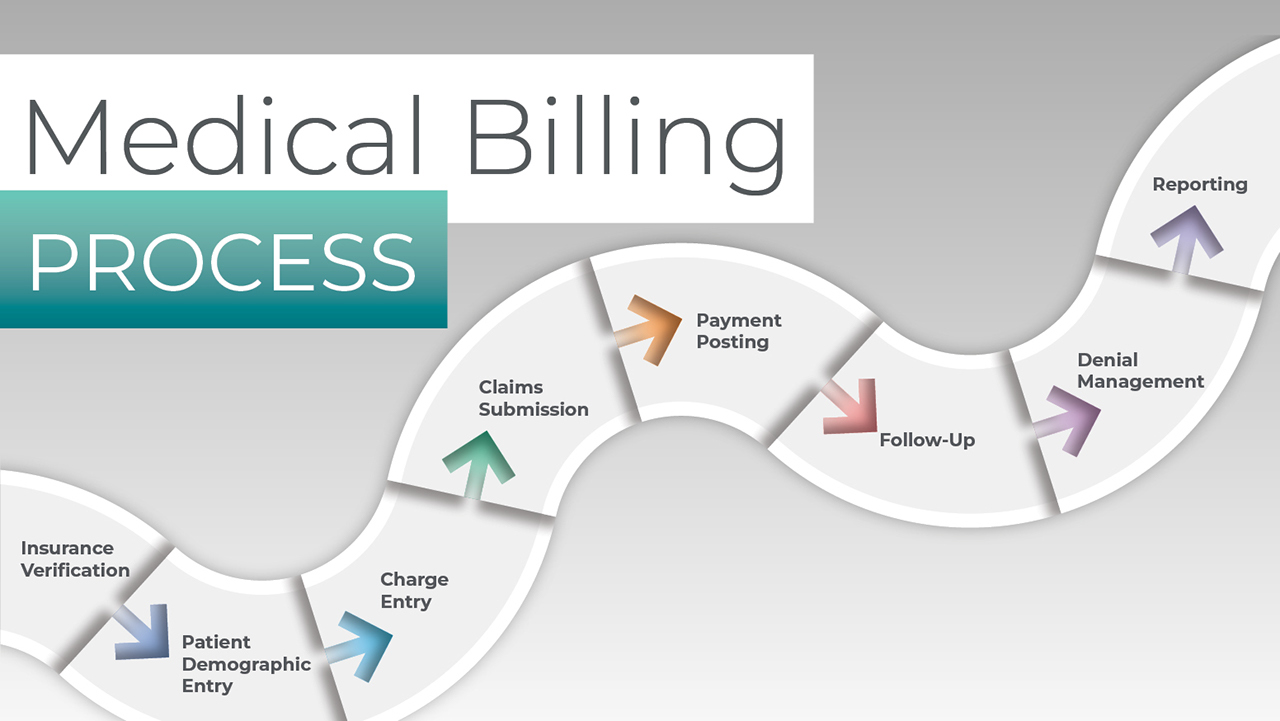

Finance
How To Buy Caveat Emptor Stocks
Published: January 17, 2024
Learn how to buy caveat emptor stocks and navigate the world of finance with expert tips and strategies. Find out how to invest wisely and maximize your returns.
(Many of the links in this article redirect to a specific reviewed product. Your purchase of these products through affiliate links helps to generate commission for LiveWell, at no extra cost. Learn more)
Table of Contents
Introduction
Welcome to the fascinating world of Caveat Emptor stocks! If you’re a seasoned investor looking to explore unique opportunities or a curious novice seeking to expand your knowledge, this article will guide you through the ins and outs of buying Caveat Emptor stocks.
Before diving into the specifics, let’s first understand what Caveat Emptor stocks are all about. In Latin, Caveat Emptor means “buyer beware.” In the stock market, Caveat Emptor stocks refer to stocks that carry a significant level of risk and potential volatility. These are typically companies that have faced financial difficulties, regulatory concerns, or legal issues.
Investing in Caveat Emptor stocks can be a double-edged sword. On one hand, they can offer substantial returns if the company successfully turns its fortunes around. On the other hand, investing in these stocks comes with significant risks. Therefore, it’s crucial to approach Caveat Emptor stocks with caution and conduct thorough research before making any investment decisions.
In this comprehensive guide, we’ll walk you through the steps to research, analyze, and evaluate Caveat Emptor stocks. We’ll explore how to assess financial statements, evaluate management, examine legal and regulatory risks, and identify potential opportunities. Additionally, we’ll discuss strategies for managing risks and creating a balanced portfolio of Caveat Emptor stocks.
It’s important to note that investing in Caveat Emptor stocks requires a unique set of skills and an understanding of the market’s dynamics. This article aims to equip you with the knowledge and tools necessary to make informed decisions and maximize potential returns while mitigating risks.
Whether you’re intrigued by the allure of high-risk, high-reward investments or looking to diversify your portfolio, exploring the world of Caveat Emptor stocks can be an exciting venture. So buckle up and join us on this journey as we delve into the intricacies of investing in Caveat Emptor stocks and discover how to make the most of this thrilling investment opportunity.
What are Caveat Emptor Stocks?
Caveat Emptor stocks, also known as “buyer beware” stocks, are a specific category of stocks that carry elevated levels of risk due to various factors such as financial distress, regulatory concerns, or legal issues. These stocks are often associated with companies that have faced significant challenges and are considered higher risk investments.
Companies may enter the Caveat Emptor category for several reasons. One common reason is financial distress, where a company is struggling with liquidity issues, debt burdens, or declining revenues. These stocks are often traded on over-the-counter (OTC) markets rather than major exchanges, indicating their higher risk profile.
Regulatory concerns can also contribute to a company being classified as a Caveat Emptor stock. This may be a result of violations or non-compliance with securities regulations, accounting irregularities, or other factors that raise doubts about the company’s operations or reporting practices. Investors need to be aware of these regulatory concerns and assess the potential impact they may have on the company’s stability and future prospects.
Legal issues can also play a significant role in categorizing a stock as Caveat Emptor. This may include ongoing litigation, lawsuits, or legal disputes that can impact the company’s financial position and reputation. Investors need to thoroughly evaluate the implications of these legal issues and the potential risks they pose to the investment.
It’s important to note that Caveat Emptor stocks are not inherently bad investments. While they come with higher risks, they can also present opportunities for substantial returns if the company successfully navigates its challenges and recovers. These stocks often attract investors looking for undervalued assets or turnaround opportunities.
Investing in Caveat Emptor stocks requires thorough research, due diligence, and a willingness to accept higher levels of risk. It’s essential for investors to carefully analyze the company’s financial statements, evaluate the management team’s ability to execute a turnaround strategy, and assess the legal and regulatory risks involved. By understanding the unique characteristics of Caveat Emptor stocks, investors can make more informed decisions and potentially capitalize on these higher-risk investments.
Researching Caveat Emptor Stocks
When it comes to investing in Caveat Emptor stocks, thorough research is crucial to minimize risks and maximize potential returns. Here are some key steps to follow when researching Caveat Emptor stocks:
- Identify the Reasons: Start by understanding why a particular stock is labeled as Caveat Emptor. Look into the company’s financial history, regulatory filings, legal issues, and other relevant factors that may have led to its classification.
- Analyze Financial Statements: Dive deeply into the company’s financial statements, including balance sheets, income statements, and cash flow statements. Evaluate key financial metrics such as revenue growth, profitability, debt levels, and liquidity. Pay attention to any red flags or warning signs, such as declining revenues or mounting debt.
- Evaluate Management: Assess the management team’s experience, track record, and ability to turn the company around. Look for indications of strong leadership, strategic decision-making, and a clear plan for addressing the company’s challenges. Consider researching the background of key executives and their past accomplishments.
- Assess Legal and Regulatory Risks: Understand the legal and regulatory hurdles that the company is facing. Review any pending lawsuits, regulatory investigations, or compliance issues. Analyze the potential impact of these risks on the company’s financial stability and operations, and evaluate the management’s ability to address and resolve them.
- Study Market and Industry Conditions: Consider the broader market and industry factors that may impact the company’s prospects. Assess the competitive landscape, market trends, and the company’s position within its industry. Understand how macroeconomic variables can influence its performance and future outlook.
- Seek Professional Advice: Consider consulting with financial advisors or investment professionals who specialize in Caveat Emptor stocks. These experts can provide valuable insights and guidance based on their expertise and experience. They can help you navigate the complexities of these high-risk investments and identify potential opportunities.
Remember, thorough research is key when it comes to Caveat Emptor stocks. By analyzing financial statements, evaluating management, assessing legal and regulatory risks, and staying informed about the market and industry conditions, you can make more informed investment decisions. While the path may be challenging, the rewards can be substantial for those who are diligent and able to spot opportunities in this unique investment landscape.
Analyzing Financial Statements
One of the most important steps in researching Caveat Emptor stocks is analyzing the company’s financial statements. By carefully examining these documents, investors can gain valuable insights into the company’s financial health, potential risks, and growth prospects. Here are some key factors to consider when analyzing financial statements:
- Revenue and Revenue Growth: Evaluate the company’s revenue figures and assess the trend over time. Look for consistent or increasing revenue growth, as it indicates the company’s ability to generate sales and expand its market share.
- Profitability and Margins: Examine the company’s profit margins, such as gross profit margin and net profit margin. Compare these figures to industry benchmarks to determine the company’s profitability relative to its peers. Consistent or improving margins can be a positive sign for investors.
- Debt Levels and Financial Stability: Analyze the company’s debt levels, including both short-term and long-term debt. Look for a manageable debt-to-equity ratio, as excessive debt can pose significant financial risks. Evaluate the company’s ability to meet its financial obligations and maintain a healthy balance sheet.
- Cash Flow: Evaluate the company’s operating cash flow and free cash flow. Positive and consistent cash flow is crucial for a company’s sustainability and growth. It allows the company to reinvest in its operations, repay debts, and provide returns to shareholders.
- Asset Quality: Assess the quality of the company’s assets. Look at the composition of its assets, including tangible and intangible assets. Evaluate the company’s inventory turnover ratio and any impairments or write-downs that may impact asset values.
- Financial Ratios: Calculate and interpret key financial ratios such as the current ratio, quick ratio, and return on equity (ROE). These ratios provide insights into the company’s liquidity, ability to meet short-term obligations, and profitability.
When analyzing financial statements, it’s important to compare the company’s performance to its historical data and industry benchmarks. This helps to identify any trends, deviations, or areas of concern. It’s also crucial to read the accompanying footnotes and management’s discussion and analysis (MD&A) to gain a deeper understanding of the company’s financial position and any significant events or changes.
Keep in mind that financial statements provide a snapshot of the company’s financial condition at a particular point in time. It’s essential to consider other qualitative factors and conduct a comprehensive analysis of the company’s overall business model, competitive landscape, and industry trends. This holistic approach will enable you to make more informed investment decisions when dealing with Caveat Emptor stocks.
Evaluating Management
When it comes to investing in Caveat Emptor stocks, evaluating the management team is a critical aspect of the research process. The management team plays a vital role in the company’s ability to navigate challenges, seize opportunities, and drive growth. Here are some key factors to consider when evaluating the management of Caveat Emptor stocks:
- Experience and Track Record: Assess the management team’s experience and track record. Look at their previous roles, achievements, and performance in similar or related industries. A seasoned management team with a history of success can provide confidence in their ability to lead the company through difficult times.
- Strategic Vision and Execution: Evaluate the management team’s strategic vision for the company. Consider whether they have a clear roadmap for addressing the company’s challenges and positioning it for future growth. Assess their ability to execute their strategies effectively and make informed decisions in a dynamic business environment.
- Communication and Transparency: Look for a management team that communicates openly and transparently with shareholders. They should provide regular updates and be willing to address concerns and questions. Transparent communication is a sign of good governance and management integrity.
- Stakeholder Alignment: Consider how well the management team aligns the interests of shareholders, employees, customers, and other stakeholders. Look for evidence of efforts to create value for shareholders and a culture that fosters long-term sustainable growth.
- Succession Planning: Assess whether the management team has a clear succession plan in place. A robust succession plan ensures continuity and stability in leadership, reducing the risks associated with management changes.
- Corporate Governance: Evaluate the company’s corporate governance practices, including board structure, independence, and diversity. Look for a strong board of directors that provides effective oversight and accountability of the management team.
In addition to considering these factors, it can be valuable to research the backgrounds and reputations of key executives within the management team. This includes examining their educational qualifications, professional affiliations, and industry recognition.
While evaluating management, it’s important to recognize that mistakes and setbacks can happen even with the most experienced teams. Consider the management team’s ability to learn from past challenges and adapt their strategies accordingly. Look for indications of resilience, adaptability, and a willingness to take responsibility for their actions.
Evaluating the management team of Caveat Emptor stocks requires a combination of qualitative and quantitative analysis. By assessing their experience, track record, strategic vision, and transparency, investors can gain insights into the team’s ability to navigate the company through its current challenges and capitalize on potential opportunities.
Assessing Legal and Regulatory Risks
When investing in Caveat Emptor stocks, it is crucial to assess the legal and regulatory risks associated with the company. These risks can have a significant impact on the company’s financial stability, operations, and overall performance. Here are key factors to consider when assessing legal and regulatory risks:
- Lawsuits and Legal Disputes: Research and analyze any pending or ongoing lawsuits, legal disputes, or regulatory investigations involving the company. Understand the nature of these legal issues, their potential impact, and the likelihood of a favorable outcome. Legal battles can drain financial resources and damage the company’s reputation.
- Regulatory Compliance: Evaluate the company’s compliance with applicable laws and regulations within its industry. Look for any history of non-compliance and the associated consequences. Consider the potential impact of regulatory changes and the ability of the company to adapt to evolving compliance requirements.
- Government Policies and Regulations: Understand the broader regulatory environment that the company operates in. Analyze how government policies and regulations may directly or indirectly affect the company’s operations, supply chain, or market demand. Keep abreast of potential changes in regulations that could significantly impact the company’s performance.
- Market Access and Licensing: Determine if the company has the necessary licenses and permits to operate legally in its industry. Consider any barriers to market entry or restrictions imposed by regulatory authorities. The ability of the company to secure and maintain licenses is crucial for its long-term viability.
- Compliance Culture: Assess the company’s overall commitment to compliance and ethical practices. Evaluate the strength of its internal controls, risk management systems, and governance structure. Consider the effectiveness of the company’s compliance training programs and the presence of a strong ethical framework.
- Industry-Specific Regulations: Understand the specific regulations and requirements that apply to the company’s industry. Different sectors have unique regulatory landscapes, and compliance can play a significant role in the company’s success or failure. Stay informed about industry trends and regulatory changes that may impact the company’s competitiveness.
When assessing legal and regulatory risks, it is essential to consult legal experts and professionals with expertise in the relevant industry. They can provide insights into specific legal and regulatory challenges and assist in evaluating the potential impact on the company’s operations and financial stability.
Investors should evaluate the company’s approach to risk management and its ability to effectively mitigate legal and regulatory risks. It is vital to understand how the company addresses compliance issues, rectifies any violations, and implements measures to prevent future non-compliance.
By thoroughly assessing legal and regulatory risks, investors can make informed decisions and manage their exposure to potential liabilities. An understanding of the legal landscape and regulatory environment is critical when dealing with Caveat Emptor stocks, allowing investors to evaluate the potential impact of these risks on the investment’s overall risk-reward dynamics.
Identifying Potential Opportunities
While Caveat Emptor stocks carry higher levels of risk, they can also present unique opportunities for investors. Identifying potential opportunities in this segment requires a thorough analysis of various factors. Here are some key considerations when looking for potential opportunities:
- Undervalued Stocks: Look for Caveat Emptor stocks that may be undervalued by the market. These stocks may be trading at a significant discount to their intrinsic value, presenting an opportunity for potential gains if the market recognizes their true worth.
- Turnaround Situations: Consider companies that are undergoing a turnaround process. Look for signs of a management team that is implementing strategic changes, streamlining operations, or restructuring the company to improve performance. Successful turnarounds can lead to substantial returns for investors.
- Industry Opportunities: Analyze the industry and sector in which the Caveat Emptor stock operates. Identify growing or emerging sectors that have a positive outlook and potential for future growth. Investing in companies operating in these sectors may offer significant upside potential.
- Unique Products or Services: Evaluate the company’s products or services and assess their uniqueness or competitive advantage. Look for innovative or disruptive offerings that have the potential to capture a significant market share or create a new niche within the industry.
- Favorable Market Conditions: Monitor the broader economic and market conditions. Identify potential catalysts or tailwinds that could positively impact the company’s prospects. These could include favorable government policies, industry consolidation, or an increase in demand for specific products or services.
- Partnerships or Acquisitions: Investigate any strategic partnerships, collaborations, or potential acquisitions that the company may be involved in. These can indicate opportunities for growth, synergies, and potential market expansion.
It’s important to note that while identifying potential opportunities is crucial, it’s equally essential to conduct a comprehensive analysis and due diligence on each opportunity. Perform a thorough examination of the company’s financial statements, management team, legal and regulatory risks, as well as market and competitive dynamics.
Investing in Caveat Emptor stocks requires patience, careful analysis, and a long-term perspective. It’s important to weigh potential opportunities against the associated risks and ensure that the potential rewards justify the investment. Diversification can also play a vital role in managing risks when investing in this higher-risk segment.
Remember, navigating Caveat Emptor stocks requires a mix of research, analysis, and an understanding of the company’s unique circumstances. With a diligent approach, identifying potential opportunities in this segment can lead to profitable investments.
Managing Risks
Investing in Caveat Emptor stocks comes with inherent risks due to the volatile nature of these stocks. However, with careful risk management strategies, investors can help mitigate potential downsides and protect their portfolios. Here are some key approaches to managing risks when dealing with Caveat Emptor stocks:
- Diversification: Diversify your portfolio by investing in a variety of Caveat Emptor stocks across different industries. By spreading your investments, you can reduce exposure to any single company or sector and potentially mitigate losses if one investment underperforms.
- Thorough Research: Conduct comprehensive research and due diligence on each Caveat Emptor stock before investing. Analyze the company’s financial statements, management team, legal and regulatory risks, and industry dynamics. Thorough research can help identify potential risks and make informed investment decisions.
- Exit Strategy: Establish a clear exit strategy for each investment in advance. Determine the criteria under which you will sell or reduce your holdings, such as reaching a specific target price, a significant change in the company’s fundamentals, or the occurrence of adverse events. Having an exit strategy in place helps minimize potential losses and maximize returns.
- Monitor and Stay Informed: Regularly monitor the performance and news surrounding your Caveat Emptor stocks. Stay updated on any developments, news, or changes that could impact the company or the broader market. Being proactive and staying informed allows you to react quickly to potential risks or opportunities.
- Set Realistic Expectations: Recognize that investing in Caveat Emptor stocks carries higher risks and potential volatility. Set realistic expectations for your investments and understand that not all of them will result in significant gains. Be prepared for potential losses and assess the risks versus the potential rewards.
- Consult with Professionals: Consider seeking advice from financial advisors or professionals experienced in investing in Caveat Emptor stocks. Their expertise can provide guidance and insights to help navigate the unique challenges and risks associated with these stocks.
It is important to note that risk management does not guarantee avoiding losses altogether. Some Caveat Emptor stocks may entail substantial risks that cannot be completely mitigated. Therefore, investors should carefully assess their risk tolerance and only allocate a portion of their portfolio to these high-risk investments.
Lastly, regular review and evaluation of your portfolio’s performance is essential. Assess the impact of your investments in Caveat Emptor stocks on your overall portfolio. If necessary, consider making adjustments or rebalancing your portfolio to maintain an appropriate risk-reward balance.
By following these risk management strategies, investors can better protect themselves against unforeseen events and potential losses when investing in Caveat Emptor stocks.
Creating a Portfolio of Caveat Emptor Stocks
Building a portfolio of Caveat Emptor stocks requires careful consideration and a well-thought-out strategy to maximize potential returns while managing risks. Here are some key steps to follow when creating a portfolio of Caveat Emptor stocks:
- Set Investment Goals: Determine your investment goals and objectives. Are you seeking capital appreciation, income generation, or a combination of both? Understand your risk tolerance and time horizon to align your portfolio strategy accordingly.
- Diversify Your Holdings: Spread your investments across a mix of Caveat Emptor stocks from different sectors and industries. Diversification helps reduce the impact of any single stock’s performance and spreads the risk across multiple investments.
- Perform Thorough Research: Conduct comprehensive research and analysis on each stock before including it in your portfolio. Assess financial statements, evaluate management, and analyze legal and regulatory risks. This thorough research helps identify stocks with growth potential and sound fundamentals.
- Allocate Capital Strategically: Allocate your capital strategically based on your risk tolerance and investment objectives. Consider the potential returns and risks associated with each stock to determine the appropriate allocation. Higher-risk stocks may warrant a smaller allocation, while lower-risk stocks may receive a larger portion of your investment.
- Regularly Monitor and Rebalance: Continuously monitor the performance of your Caveat Emptor stocks and stay updated on any news or developments that may impact their outlook. Rebalance your portfolio periodically to maintain your desired asset allocation and align with your investment goals.
- Stay Informed: Stay informed about market trends, economic conditions, and industry dynamics. This knowledge helps you make informed decisions and adapt your portfolio strategy accordingly. Monitor both internal factors, such as company-specific news, and external factors, such as changes in regulatory policies or market sentiment.
- Manage Cash Flow: Consider your cash flow needs when creating your portfolio. Ensure you have sufficient liquidity for expenses and take into account any potential investment opportunities that may arise. Maintaining a balanced cash flow helps you capitalize on opportunities and manage liquidity effectively.
- Review Performance Regularly: Review your portfolio’s performance periodically to assess the effectiveness of your investment strategy. Compare the returns of your Caveat Emptor stocks to your overall portfolio and evaluate the impact on your investment goals. Adjust your strategy if necessary to optimize performance.
Creating a portfolio of Caveat Emptor stocks requires a balance between risk and reward. It’s important to have realistic expectations and recognize that not all investments will be successful. Continuously evaluate and adapt your strategy based on market conditions and changes in the risk landscape.
Remember that Caveat Emptor stocks should be part of a well-diversified portfolio that includes other asset classes and investment types. By incorporating Caveat Emptor stocks strategically and managing them alongside other investments, you can potentially enhance the risk-return profile of your overall portfolio.
Working with a financial advisor or investment professional who specializes in Caveat Emptor stocks can provide valuable guidance and help you optimize your portfolio based on your specific circumstances and investment objectives.
Conclusion
Investing in Caveat Emptor stocks can be an enticing opportunity for those seeking higher-risk, higher-reward investments. While these stocks carry elevated levels of risk due to financial distress, regulatory concerns, or legal issues, they can also offer substantial returns if approached with caution and diligent research.
Throughout this comprehensive guide, we have explored the various aspects of investing in Caveat Emptor stocks. We’ve discussed the definition of Caveat Emptor stocks, the importance of thorough research, analyzing financial statements, evaluating management, assessing legal and regulatory risks, identifying potential opportunities, and managing risks when building a portfolio.
It is crucial to approach Caveat Emptor stocks with a balanced mindset and a long-term perspective. Thoroughly researching each potential investment, evaluating the company’s financial health, management capabilities, and legal risks are key to making informed investment decisions.
Managing risks when investing in Caveat Emptor stocks involves diversification, regular monitoring, establishing an exit strategy, and staying informed. By managing risks effectively, investors can mitigate potential downsides and protect their portfolios.
Creating a portfolio of Caveat Emptor stocks requires a strategic approach, including setting goals, diversifying holdings, performing thorough research, and regularly evaluating and rebalancing the portfolio. An understanding of market conditions, industry trends, and maintaining a long-term perspective are also crucial factors.
As with any investment, it’s important to consider your risk tolerance, investment goals, and seek professional advice when needed. Engaging with financial advisors or investment professionals who specialize in Caveat Emptor stocks can provide valuable insights and guidance tailored to your investment needs.
In conclusion, investing in Caveat Emptor stocks can be a rewarding yet challenging endeavor. By conducting thorough research, managing risks effectively, and staying informed, you can navigate the unique opportunities and potential pitfalls that come with investing in these stocks. With the right approach and a disciplined strategy, Caveat Emptor stocks can contribute to the growth and diversification of your investment portfolio.














